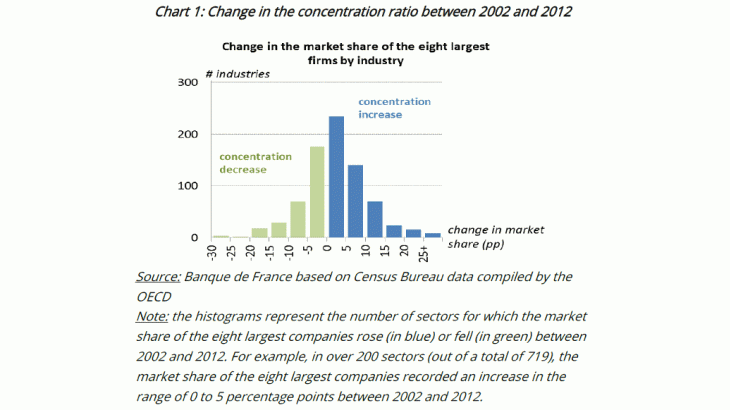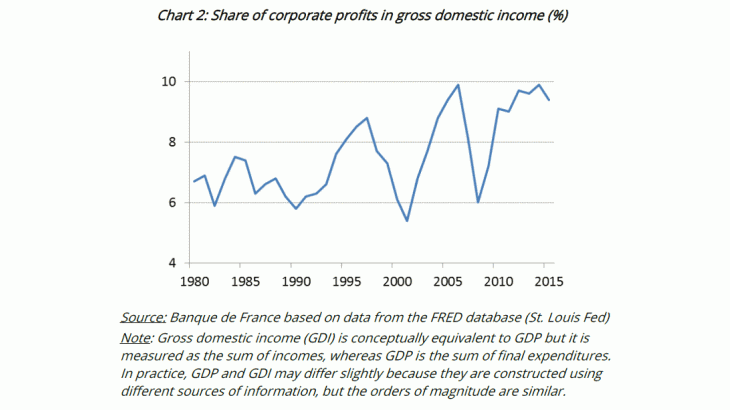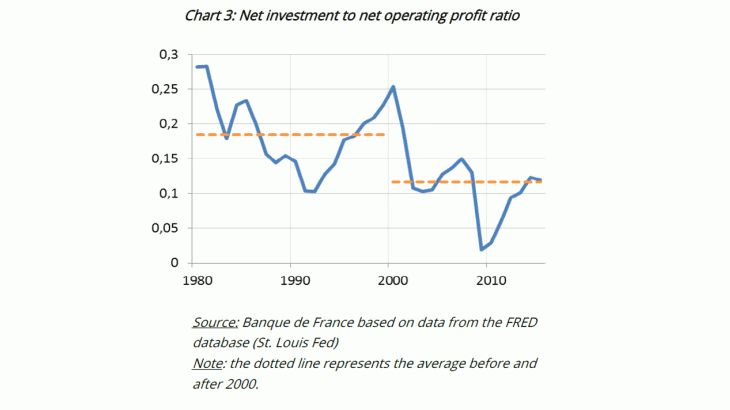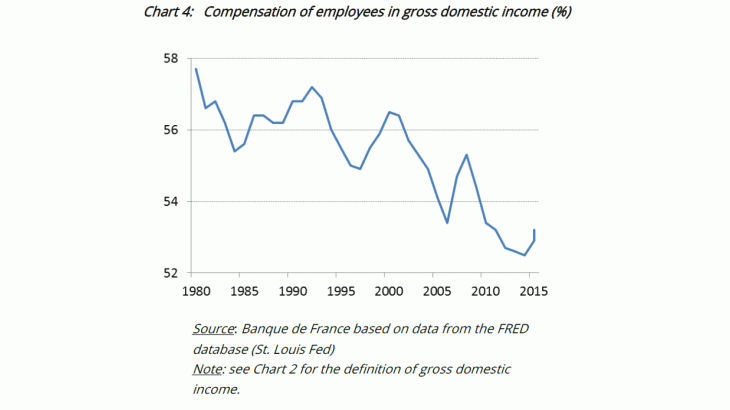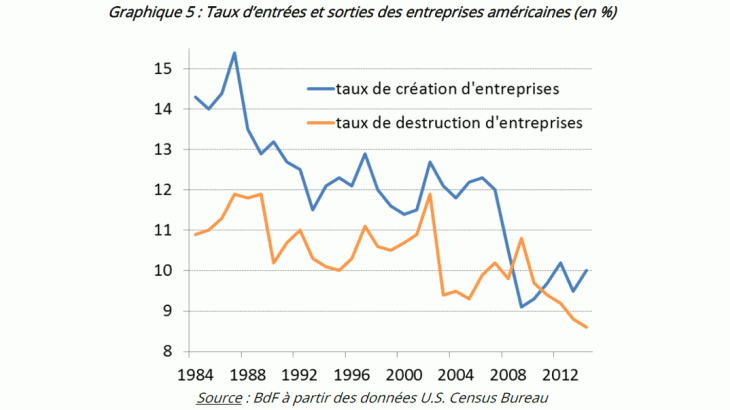But other studies favour a more pessimistic scenario and attribute this increase in concentration to greater barriers to entry. The rise in profits and decline in investment seem to corroborate this latter assumption. Grullon et al. (2016) stress the lax enforcement of antitrust regulations by government agencies in recent years. The decline in the entry rate of new firms (see Chart 5), which is much more marked than the fall in the exit rate, also seem to indicate a lower market contestability. This trend is accompanied by a fall in the new job creation rate over the same period (from 20% to 14%). In this context, concentration could weigh on US growth in the long term.
Monopoly rents: good or bad for the US economy?
In theory, a firm can only dominate a market temporarily before its position is challenged by a new competitor. Enjoying a monopoly rent thanks to the creation of a new product is a fair compensation for past investment (in R&D for example). In this Schumpeterian framework, temporary monopoly rents are essential for innovation and long-term growth.
However, Zingales (2017) argues that investment can be misused to create barriers to entry, by using these resources to finance lobbying for example. The fact that the most profitable firms invest relatively little may corroborate this theory. Buying emerging startups to reduce competition is another example of the misuse of productive investment to maintain monopoly rents.
In order to measure the impact of these monopolies on the US economy, we need to better understand the causes of this concentration and the degree of contestability that these superstar firms really face.
